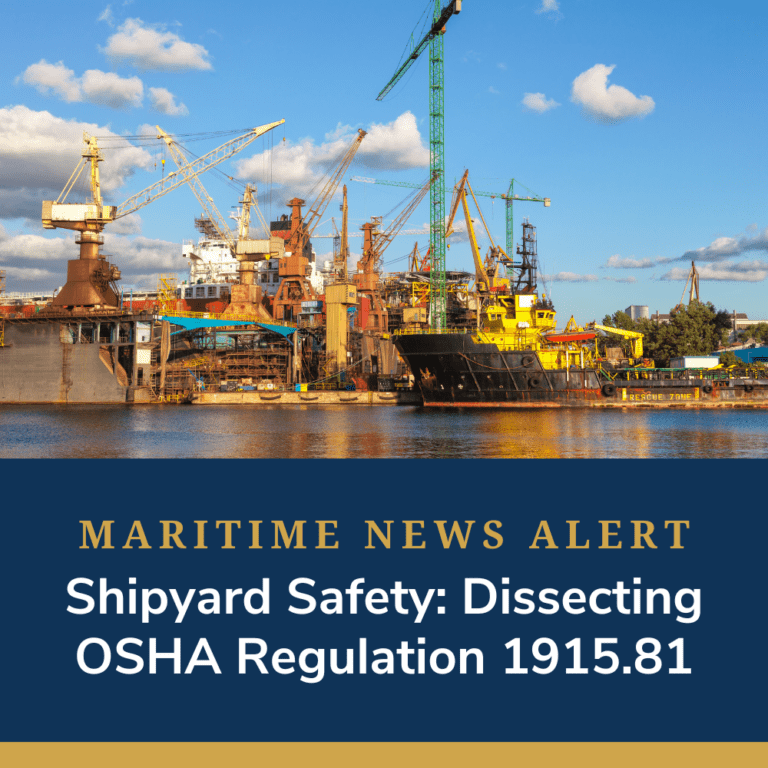
Shipyard employers have numerous state and federal laws they must follow to create a safe work environment for their employees.
Anyone who oversees a shipyard and employs people must understand what important federal housekeeping regulations should be followed. It is the responsibility of a shipyard employer to take the appropriate safety precautions to prevent workplace injuries.
As a shipyard employee, it is also vital for you to understand these laws and ensure that your employer is prioritizing your workplace safety.
In this blog post, we will break down some key aspects of the 1915.81 Federal Marine Law which covers general working conditions and occupational safety and health standards for shipyard employment.
Maintaining Safe Walkways Aboard
One of the most common injuries at sea can come from slips and falls. Slips and falls in shipyards can be prevented by properly maintaining the walkways. Maintaining walkways and safe passages to and from the ship can protect employees from slipping and getting injured.
In the 1915.81 Federal Marine Law, there are clauses relating to the maintenance and care of the walkways:
- The employer should eliminate slippery conditions, like snow and ice, on walkways
- If it is not possible to eliminate the slippery conditions, the employer must restrict their employees from using the slippery walkways
- If the walkways must be used, the employer must provide slip-resistance footwear to their employees in accordance with 29 CFR part 1915, subpart I
Safe Storage of Hazardous Materials
Shipyards contain dangerous and hazardous materials, which must be put away properly to prevent injuries in the workplace. Employers must also ensure that passageways are clear of the following hazardous materials:
- Debris, which includes solid and liquid wastes
- Tools, materials, equipment, and other related objects
- Hoses and electrical service cords must not be blocking the walkways
- Hoses and cords should be placed above the walkways to prevent injuries to the employees and materials
- Be placed under the walkways
- Or if the hoses and cords are on the walkways they must be covered and protected
Work Surface Safety
In addition to ensuring that walkways and passageways in the shipyard are properly maintained and clear, it is vital to provide that same diligence to the working surfaces.
It is the responsibility of the employer to maintain that each working surface is:
- Cleared of any tools, materials, and equipment which are not necessary to perform the job
- Cleared of debris, including solid and liquid wastes
- This must be cleared at the end of each workshift or job, depending on which comes first
- The working surfaces are maintained in dry conditions
- If the work requires a wet process, the employer must maintain proper drainage and provide dry standing places
- If it is not possible to provide a dry standing place, the employee must be provided with protective footwear when working in wet conditions
Injury at Sea Protects Maritime Workers
At Injury at Sea, we champion maritime safety and advocate for injured maritime workers. If you encounter an accident or sustain an injury while working in a shipyard, our experienced legal team stands by your side. We understand the complexities of maritime law and are dedicated to securing fair compensation for those impacted by workplace injuries.
If you have any questions, call one of our qualified maritime injury attorneys at 1-800-732-7258 or fill out the contact form to schedule your free consultation with an experienced maritime injury lawyer.